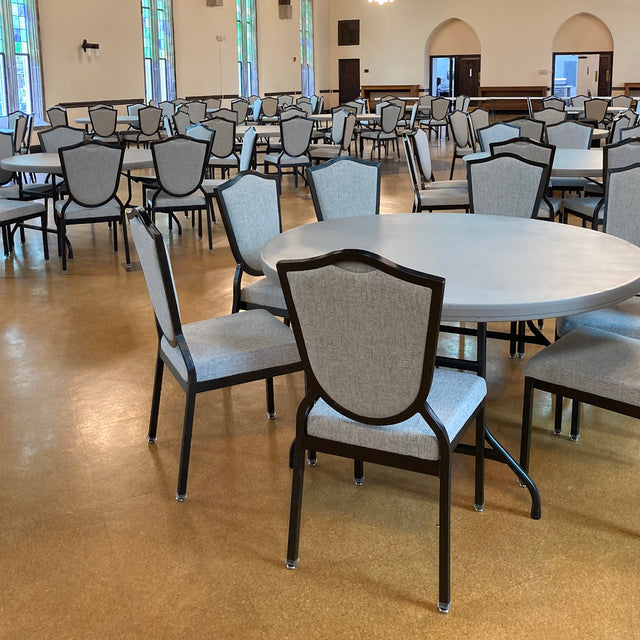The Complete Guide to Making Careful Seating Choices for Synagogues Seating
Synagogues hold immense significance as places of worship, reflection, and communal gathering for Jewish communities worldwide. One crucial aspect that plays a pivotal role in enhancing the synagogue experience is seating arrangement. Choosing the right seating arrangement involves a careful blend of tradition, comfort, inclusivity, and practicality. In this comprehensive guide, we will delve into the various factors to consider when making seating choices for synagogues, ensuring that congregants can fully engage in prayer, meditation, and communal connection.
The Essence of Synagogue Seating
Synagogue seating transcends its utilitarian purpose to become a vessel for shared experiences, prayers, and connections. The choice of seats and their arrangement reflects the values and priorities of the congregation. Every congregant, from the devoted regular to the curious visitor, interacts with these seats, making them an integral part of the worship journey.
Key Factors When Choosing Synagogue Chairs
1. Tradition and Symbolism
Seating arrangements in synagogues often uphold historical and symbolic significance. Traditional synagogues often have a central focal point, such as the Ark that houses the Torah scrolls. The seating layout typically revolves around this focal point. The most honored seats, often located near the Ark, are reserved for the Rabbi, Cantor, and community leaders. These seats symbolize leadership and spiritual guidance.
When making seating choices, it's essential to respect and preserve the historical traditions of the congregation while also considering the practical needs of modern worshippers.
2. Inclusivity and Accessibility
Creating an inclusive and accessible environment is paramount in modern synagogue design. Seating arrangements should accommodate individuals with disabilities, ensuring that everyone can participate in services comfortably. This may involve providing wheelchair-accessible seating, as well as considering the needs of individuals with mobility challenges or sensory sensitivities.
Moreover, congregations are becoming more diverse, with people from various cultural backgrounds attending services. Seating arrangements should reflect this diversity and foster a sense of belonging for all attendees.
3. Comfort and Engagement
Long services and events call for comfortable seating. Uncomfortable seating can be a distraction, hindering congregants' ability to engage fully in prayers and rituals. Padded seats with appropriate lumbar support contribute to a more comfortable experience. Adequate spacing between rows and seats also prevents overcrowding and allows for ease of movement.
In addition to physical comfort, seating arrangements should promote engagement. Consider the sightlines from different seats—ensuring that attendees have a clear view of the Bimah (platform) and the Torah reading.
4. Flexibility and Multi-Purpose Spaces
Synagogues often serve as spaces for various events beyond worship services. Opt for seating solutions that offer flexibility, allowing for easy reconfiguration to accommodate different gatherings, such as lectures, cultural events, and celebrations. Foldable seats or movable rows can help transform the worship space into a versatile venue without compromising on comfort and aesthetics.
5. Family-Friendly Seating
Synagogues are places where families come together to worship and celebrate. Designing family-friendly seating areas that accommodate parents with young children is essential. Consider incorporating designated family sections with extra space for strollers and comfortable seating suitable for families.
6. Balancing Tradition with Modernity
Striking the right balance between honoring tradition and embracing modernity can be a challenge. Some synagogues opt for a blend of traditional fixed seating in the central area and flexible seating in auxiliary spaces. This approach respects the traditional values of the congregation while catering to the evolving needs of modern worshippers.
7. Community Input and Collaboration
Incorporating the input of the congregation when making seating choices is invaluable. Seek feedback through surveys or community meetings to understand the preferences and requirements of the attendees. Collaboration fosters a sense of ownership and unity within the congregation.
8. Aesthetic Considerations
Seating choices also contribute to the overall aesthetic of the synagogue. The design and materials of the seating should complement the architectural style and interior decor. Thoughtful design enhances the sense of sacred space and reverence.
9. Maintenance and Durability
Investing in high-quality, durable seating is a wise decision for the long-term sustainability of the synagogue. The seating should be able to withstand regular use without showing signs of wear and tear. Quality materials and craftsmanship contribute to the longevity of the seats, ensuring that they continue to provide comfort and support for years to come. Synagogue seating is subject to frequent use, so durability is crucial. High-quality materials and craftsmanship ensure that the seating remains comfortable and visually appealing over time. Easy maintenance also extends the lifespan of the seating.
10. Budgetary Considerations
Seating choices should align with the budget allocated for synagogue renovations or construction. While it's essential to prioritize comfort and functionality, careful budget planning prevents overspending and ensures that funds can be allocated to other essential aspects of the synagogue.
11. Space Optimization for Spiritual Connection
Creating a layout that optimizes the available space while fostering a sense of spiritual connection among worshippers is a delicate balance. Depending on the synagogue's architectural design, consider the arrangement of seats in clusters or rows. Utilize the central aisle to provide easy access to the bimah and Torah ark. A well-thought-out layout not only accommodates the congregation but also enhances their engagement with the religious proceedings.
Crafting an Enriching Worship Experience with Great Shul Furniture
In the intricate tapestry of synagogue design, seating choices form a foundational thread that weaves comfort, engagement, and community together. Synagogue chairs and shul furniture contribute to the spiritual journey of each congregant, providing a physical space that supports introspection, connection, and reverence. From ergonomic considerations and accessible design to aesthetics and flexibility, every facet of seating choices creates a worship environment that nurtures the soul.
As you embark on the journey of designing or reimagining your synagogue seating arrangement, remember that each decision holds the potential to enhance the worship experience and shape the collective memory of your congregation for years to come.
Conclusion
The choice of synagogue chairs is a nuanced decision that goes beyond mere functionality. These chairs are essential components of the sacred space, contributing to the atmosphere of reverence, unity, and comfort. By carefully considering factors such as comfort, design, durability, symbolism, and inclusivity, synagogue leaders can select chairs that enhance the worship experience and create a welcoming environment for all members of the community. In this intersection of faith, culture, and design, the right chairs can help elevate the spiritual journey of the congregation.

